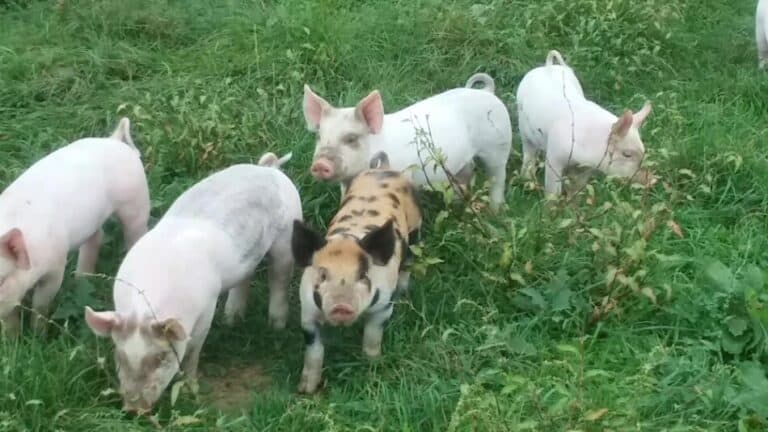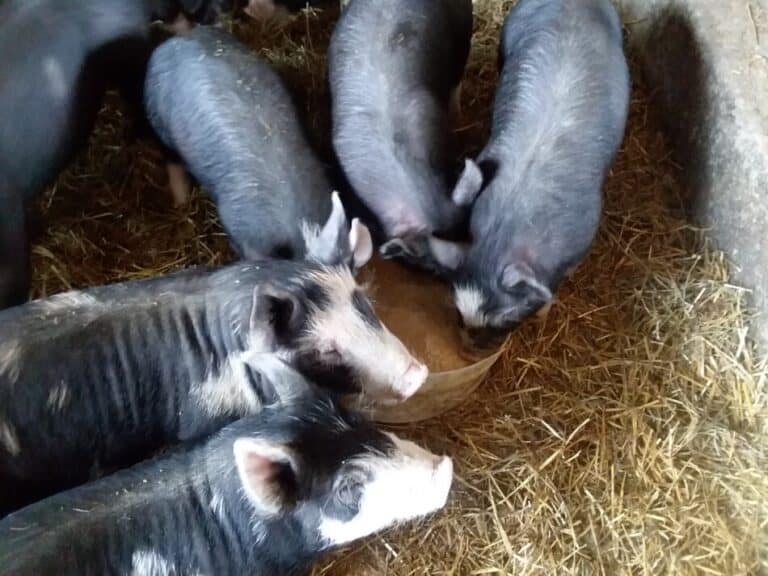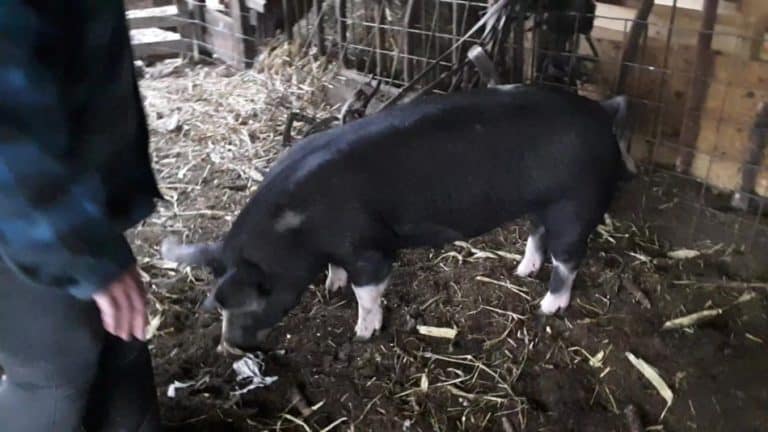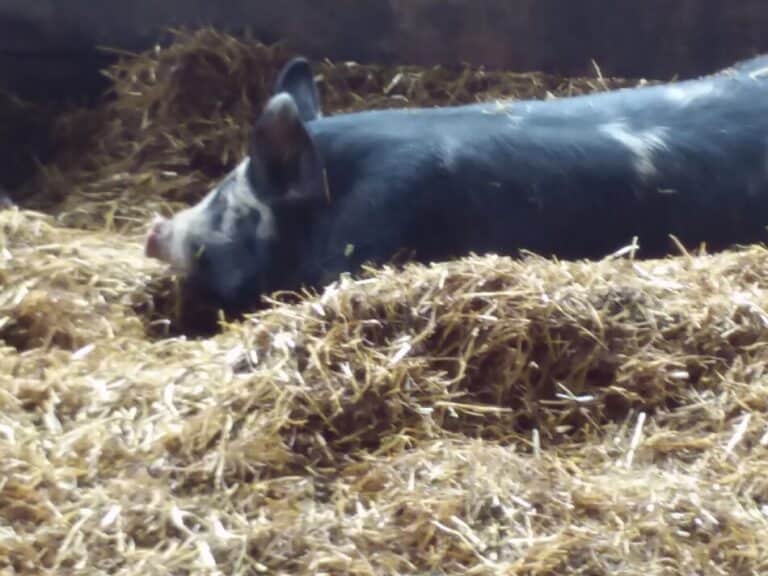When Should You Sell Your Pigs? (From Feeders Up To Breeders)
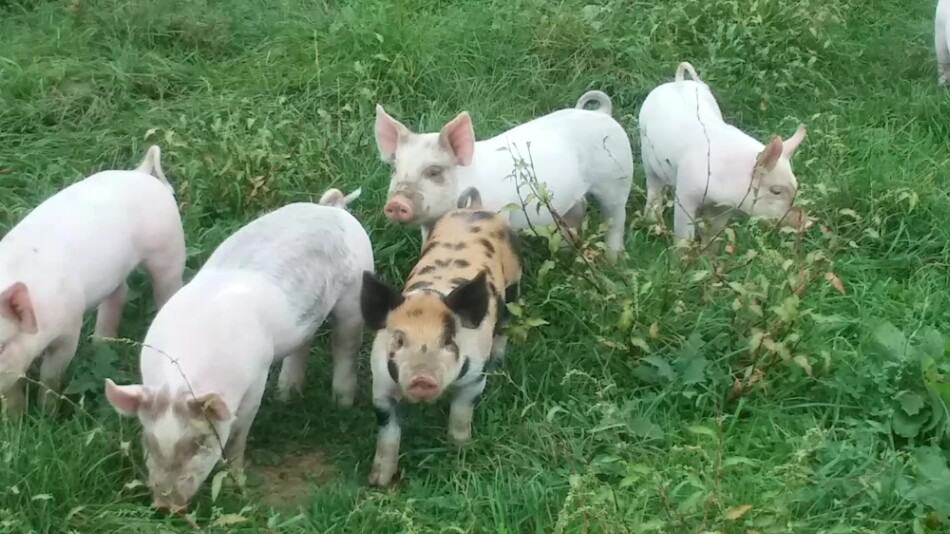
So, you’ve got a small pig operation and you’re wondering when is the best time to sell your pigs. Actually, this is not as simple as it sounds, since what you should do depends on the purpose you are raising the pigs for.
The great news is that once you’ve settled on your main purpose for raising pigs, the “when should I sell my pigs” question is easily answered!
Feeder pigs should be sold at the ideal weight for your area, usually 50-60 pounds. Roaster pigs are sold based on the customer’s needs. Breeding stock should be sold at a time when their growth is easy to evaluate, for example as feeders, ready to bred, or bred.
Best Feed For Raising Pigs will help you figure out how best to feed your pigs, if you are considering alternative feeds or feeding methods.
Sell pigs when they are ideal for their intended purpose
The first thing you need to decide when raising pigs is what age do you plan to sell them and for what purpose? If you are selling feeder pigs, sell them at 50 pounds, if you are selling market hogs, sell them at 280-300 pounds.
Younger pigs have a smaller window of being at ideal weight
Since pigs grow so quickly, you usually do not have a ton of time to dilly dally selling a particular set of pigs. When growing pigs are ready, you sell them.
Smaller pigs have a smaller window of being at your ideal selling weight. I give myself a 2 week window of selling time for feeder pigs, but not much more than that.
We sell our pigs through one of the local auctions, so sometimes the weather for the week is poor. If it’s going to be uncomfortable for the pigs to go through the sale barn and next week’s weather looks better, we wait.
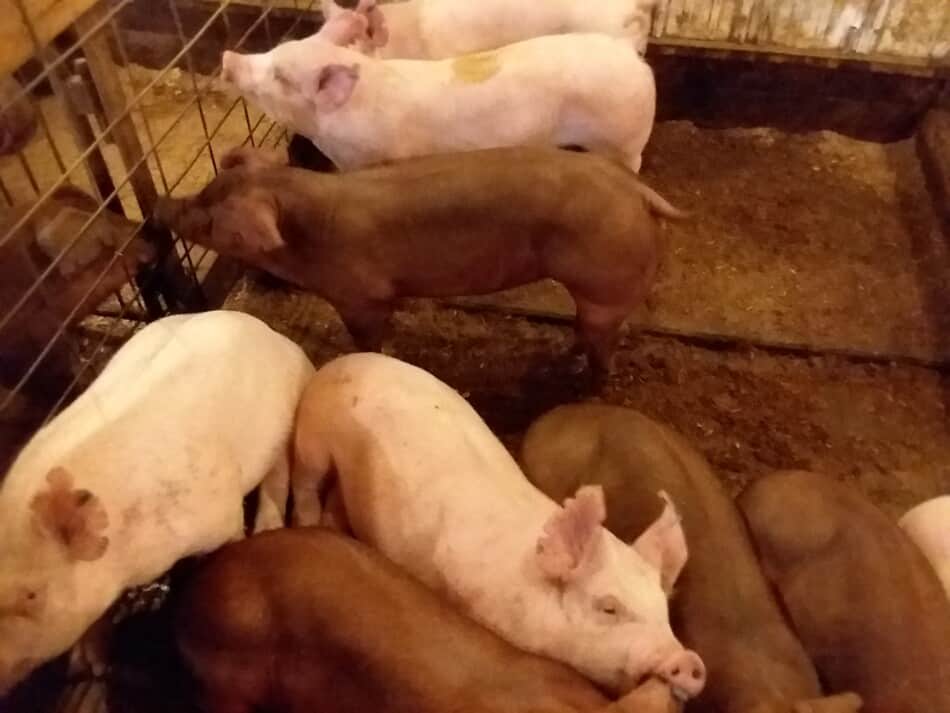
Feeder pigs should be sold at 50-60 pounds
If the plan for your pig operation is to sell feeder pigs, you’ll want to be selling those piglets when they are fully weaned and 50-60 pounds.
These piglets will be 10-12 weeks old and weaned since 8 weeks of age.
You can sell smaller feeder pigs, is that is the normal size for feeder pigs in your area.
Some areas tend to sell a newly weaned 6-8 week old feeder pig. Our area normally sells the older, well weaned 50-60 pounders.
Whichever feeder pig size is normal for your area is what people are expecting to buy and will bring higher prices.
Know your numbers, selling feeder pigs may no be the best use of your pigs
Be sure to run the numbers on your feeder pigs to know if it would be better for you to sell them as market hogs or if you are actually making more money with them as feeders.
This will depend upon your area and your market. For me feeder pigs make more sense, for you, run the numbers and see.
Roasters should be prearranged with the customer and processor
Roasters pigs can be of any size and nearly any age, from well grown piglets up to full size market hogs.
The size of the pig depends upon the customer’s needs, mainly how many servings of meat they want to get from the roasted pig.
Roaster pigs should be prearranged with the buyer. Some folks want a larger pig for a whole hog roast, some folks are thinking a 30-50 pounder for a fun, but much smaller, backyard BBQ.
In our area, roasters are much more popular in the summer months and not so great in the winter, as far as prices paid to the farmer.
The great news is that if you are prearranging your selling, you won’t be caught off guard.
Also, if the deal for a few roaster pigs falls through, they can be kept and fed out to market weight, giving you another selling option.
Market hogs should be 280-300 pounds
Your market hogs should be sold at 280-300 pounds live weight. This weight range is higher than it has been in the past, which used to be 240-250 pounds when there was a huge focus on lean.
Thankfully, for the eaters, hogs are being raised to higher weights, which gives much more fat cover and marbling to the meat, so the pork tastes better. Hopefully, dry, overly lean pork is gone for good!
Castration restrictions will change your market hog selling weights
Some countries have different ideal weights than these, mainly due to restrictions on castration. Gilts, in no castration systems, can still be raised to the weight of your choice, of course.
If your area has a demand for larger market hogs, as well, your gilts could be sold at higher weights, if it makes you money and you have the facilities to do it.
Some genetic lines do not require meat boars to be castrated
There are genetics that do not require castration of boars, according to the breeder. Sugar Mountain Farm is the only place I know of, specifically. If you had no taint genetics, you could sell your meat boars at higher weights.
A big catch here is the buyer has to have confidence in the no taint genetics, as well.
In our area, a breeding size boar selling for meat brings $5.00, yes just $5, no one wants the meat. Even if he is no taint, he’ll still sell for $5 through the auction.
The point is that to get your money from a no taint boar as a meat animal, you would have to get the boar processed and sell or eat the meat yourself.
None of the buyers or processors can risk buying an uncut boar for meat.
Know your costs to raise a piglet to market size
You need to know your costs before you decide to raise your piglets to market size. It may make more sense for you to sell feeder pigs or roasters, instead.
In my area right now, the profit for a feeder pig and the profit for a market hog are about the same, if you are buying feed. If I had my own corn, the market hogs would be more profitable.
The point is know your costs!
Breeding stock should be sold as ready to breed
If you are selling breeding stock pigs, they should be sold at a logical time in their development, usually ready to be bred.
Selling breeding stock gilts, for instance, at 4 months old is a poor choice on the part of the breeder. These pigs would be at an awkward stage, not feeder pigs yet not breeding age, either.
It is going to be harder for the potential buyer to evaluate the gilts when they are at this “in between” age and size.
It would make more sense to sell these breeding stock potential gilts as well weaned feeder pigs, in the 50-60 pound range or as ready to breed gilts in the 7-8 months old range.
At these specific times, feeder pig or ready to breed, the buyers know what they are looking for and can more easily decide if what you have meets their needs.
It will also be easier for both of you to figure out pricing.
In between these two times, it’s hard for the buyer to evaluate how the gilts or boars are growing.
There is also more work to be done before the gilts or boars are breeding age, meaning they are less valuable to the prospective buyer.
Bred gilts/sows can be sold 6 weeks after breeding
Bred females, gilts or sows, should be sold after they are determined to be settled (bred). There’s no room for guessing here, you need to be sure the bred females you are selling are actually bred!
A pig’s heat cycle is 21 days, so you need to check two cycles to make sure that she is bred, (she doesn’t come back into heat).
If she bred today, you need to check in 21 days, then again 21 days after that, totaling 42 days or 6 weeks.
This is how I determine if a sow or gilt is bred, watching the calendar and checking the pigs.
If you have a reliable pregnancy detector, you might be able to figure this out a bit sooner, more like 35 days post breeding.
Bred gilts and sows need to have low to no stress for 3 weeks post breeding
The main thing to avoid here is stressing or moving the bred sows or gilts in the 12-18 days post breeding.
This the time period when stress will reduce litter size, avoid selling or buying bred sows or gilts during this period.
Obviously, transportation is a big stressor, but also avoid moving pens or regrouping the sows or gilts.
If you need to rearrange your bred gilts and sows, wait until at least 21 days after breeding, to be past this 12-18 day window where you want to avoid stressing the pigs.
Read When Not to Move Sows by veterinarian Glen W. Almond for the details.
Breeding boars should be sold when they are 8-10 months old
Breeding boars should be 8-10 months old when sold. Boars of 8+months will be ready or (close to ready) to breed females when sold.
Since a breeding boar has such an important roll, he is going to be half the genetics for all of the buyer’s piglets, you want him to be full size and ready to roll when selling him.
Evaluating immature breeding stock is a guess. Until the boar is fully grown, you can only guess what he’ll turn out like.
Even folks with years of experience are still guessing. An experienced guess is likely to be good, but still a guess.
When selling breeding boars, your job is to eliminate the buyer’s guessing.
Make it easy for them by having a ready to use boar. Yes, you’ll have to keep him for a bit longer than if you would see him at 5-6 months old, but he’s also worth more to the person who needs a boar now.
Resources:
When Not to Move Sows, North Carolina State University, Glen W. Almond

